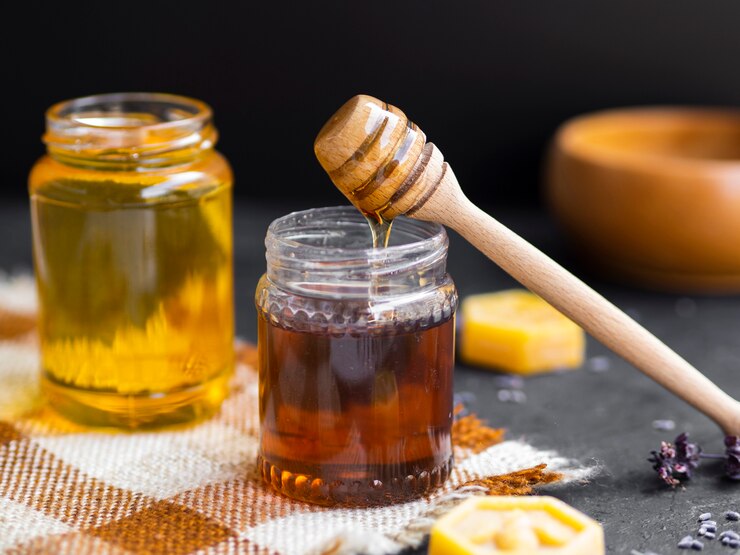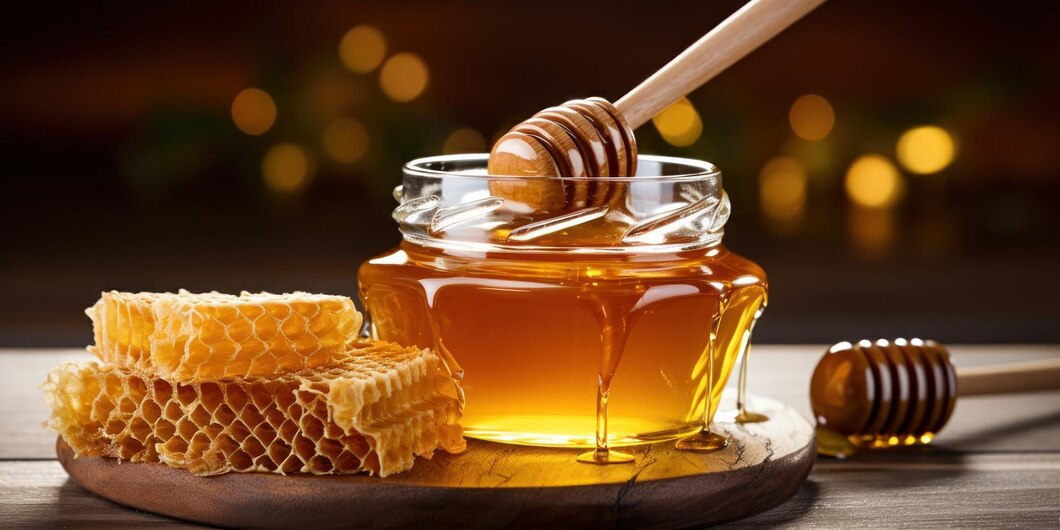Introduction: Kashmir Honey, often referred to as the “nectar of the Himalayas,” stands as a testament to the pristine beauty and natural richness of the Kashmir Valley. In this comprehensive guide, we delve into the depths of this liquid gold, exploring its origins, unique qualities, and the intricate process that makes it one of the finest honey varieties in the world.
I. Origins and Geography:
Nestled in the lap of the majestic Himalayan range, Kashmir Valley boasts a unique climate and biodiversity that contribute to the exceptional quality of its honey. The region’s diverse flora, including saffron fields, wildflowers, and orchards, provides the bees with a rich tapestry of nectar sources, resulting in a honey that encapsulates the essence of the Himalayas.
II. Harvesting Season and Beekeeping Practices:
Understanding the rhythm of nature is crucial in harvesting the purest honey. Kashmir Honey is predominantly harvested during specific seasons when the flowers bloom in abundance. Local beekeepers employ traditional and sustainable beekeeping practices, ensuring minimal interference with the bees’ natural behavior. This harmonious coexistence between humans and bees is a key factor in maintaining the honey’s purity.
III. Unique Qualities of Kashmir Honey: a. Distinct Flavor Profile:
The honey from Kashmir is renowned for its distinct flavor profile, characterized by subtle floral notes, a hint of spice, and a lingering sweetness that reflects the diverse botanical sources within the region.
b. Therapeutic Properties: Rich in antioxidants and natural enzymes, Kashmir Honey is not just a treat for the taste buds but also a source of potential health benefits. From aiding digestion to boosting the immune system, the therapeutic properties of this honey have been cherished for centuries.

c. Consistency and Texture: The texture of Kashmir Honey is velvety smooth, a testament to the care taken during the extraction and processing phases. Its fine consistency makes it a versatile ingredient in both culinary and medicinal applications.
IV. The Harvesting Process: a. Sustainable Practices:
Kashmiri beekeepers prioritize sustainable practices to ensure the well-being of the bees and the environment. This includes organic farming methods, avoiding the use of harmful pesticides, and promoting biodiversity.
b. Handcrafted Excellence: The harvesting process involves skilled beekeepers who carefully collect honeycombs and extract honey using traditional methods. The meticulous approach ensures that the honey retains its natural purity and nutritional value.
V. Culinary Applications: Kashmir Honey’s unique flavor makes it a prized ingredient in culinary creations. From drizzling it over desserts to using it in marinades and dressings, the honey enhances the taste of various dishes. The infusion of Kashmir Honey in local cuisines adds a touch of authenticity and a burst of natural sweetness.
VI. Authenticity and Quality Assurance: a. Certification and Standards:
To guarantee authenticity and quality, look for certifications from recognized bodies that attest to the honey’s origin and purity. These certifications ensure that the honey meets stringent standards and is free from adulteration.
b. Trusted Sources: Purchasing Kashmir Honey from reputable sources, whether local beekeepers or certified distributors, ensures that you are getting a genuine product. This not only supports local communities but also guarantees a product of exceptional quality.
Conclusion: In the heart of the Himalayas, the purity of Kashmir Honey unfolds as a sensory experience, encapsulating the essence of the region’s rich biodiversity. From the unique flavor profile to its therapeutic properties, every drop of this liquid gold is a testament to the delicate dance between nature and beekeepers. As you embark on the journey of savoring Kashmir Honey, relish not only its taste but also the cultural and environmental significance it carries, making it truly the finest nectar of the Himalayas.
Read Also:Unlocking the Richness of Kashmiri Honey



